In today’s hectic life, there’s always too much that needs doing, isn’t there? And why are deadlines always set for yesterday?
It’s good to de-stress and get some light relief by connecting with hundreds of like-minded online friends through social networks.
Nothing better than pulling out our shiny smartphones as we’re walking down a busy street, bumping into people, and repeatedly saying “sorry”.

Yes, online social networking is a great way to catch up on news, views, and that all-important village gossip.
But did you know there’s another social network in Britain—one that’s been going strong for several centuries?
(Re)introducing “the Pub Network”
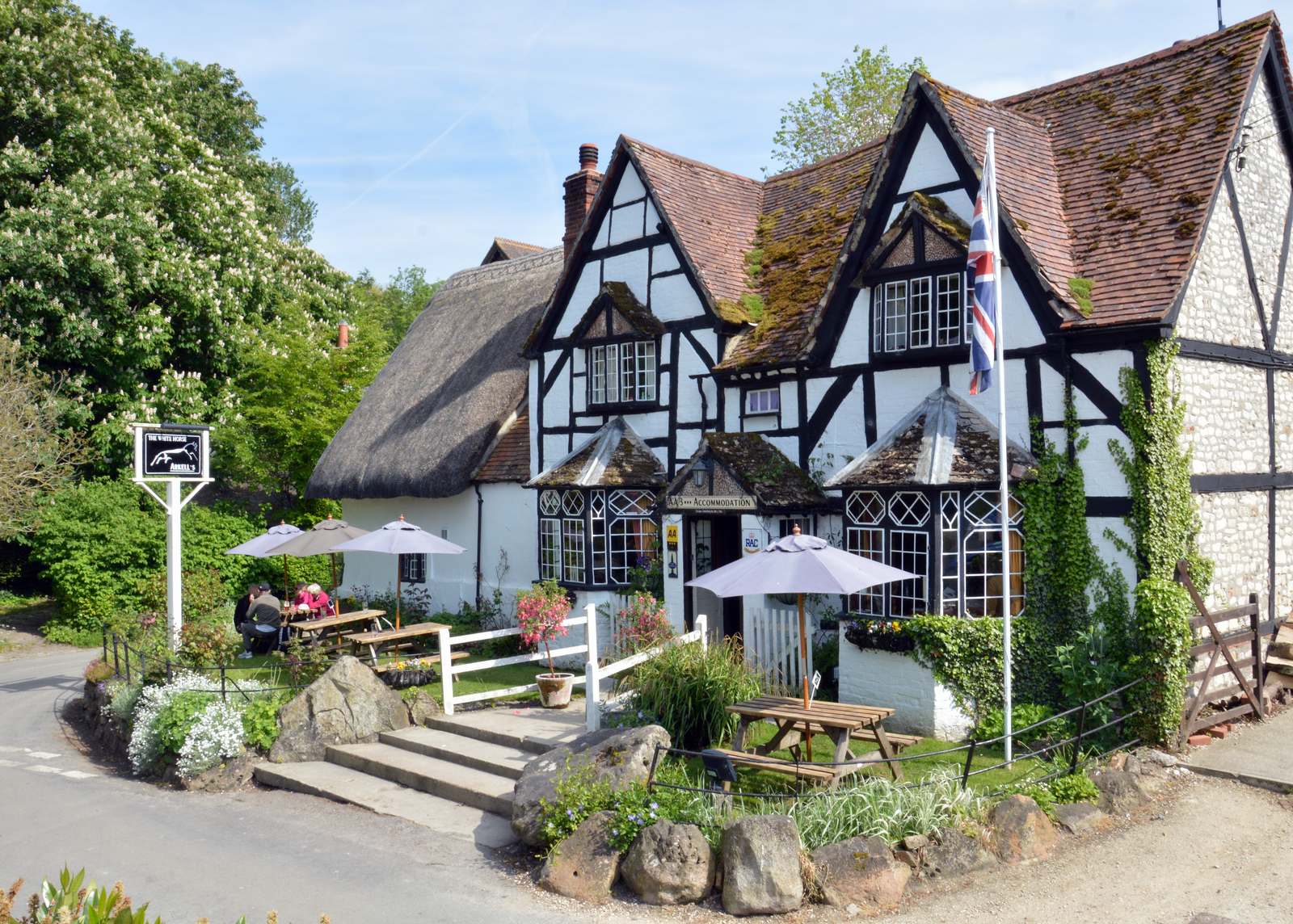
“The Pub Network” was one of the world’s first social networks.
Short for “public house” it’s open to the public as a kind of “home away from home.”
Anyone can join the Pub Network, and if they’re over 18, they can even partake in adult refreshments.
Many a problem has been solved or a solution found whilst “talking” (similar to texting and messaging) and drinking within the Pub Network.
Next to tea-drinking, talking and drinking in the Pub Network is probably the second-most-popular activity in Britain.
In fact, the Pub Network has expanded internationally, with branches in far-flung destinations like New Zealand, South Africa, and California!
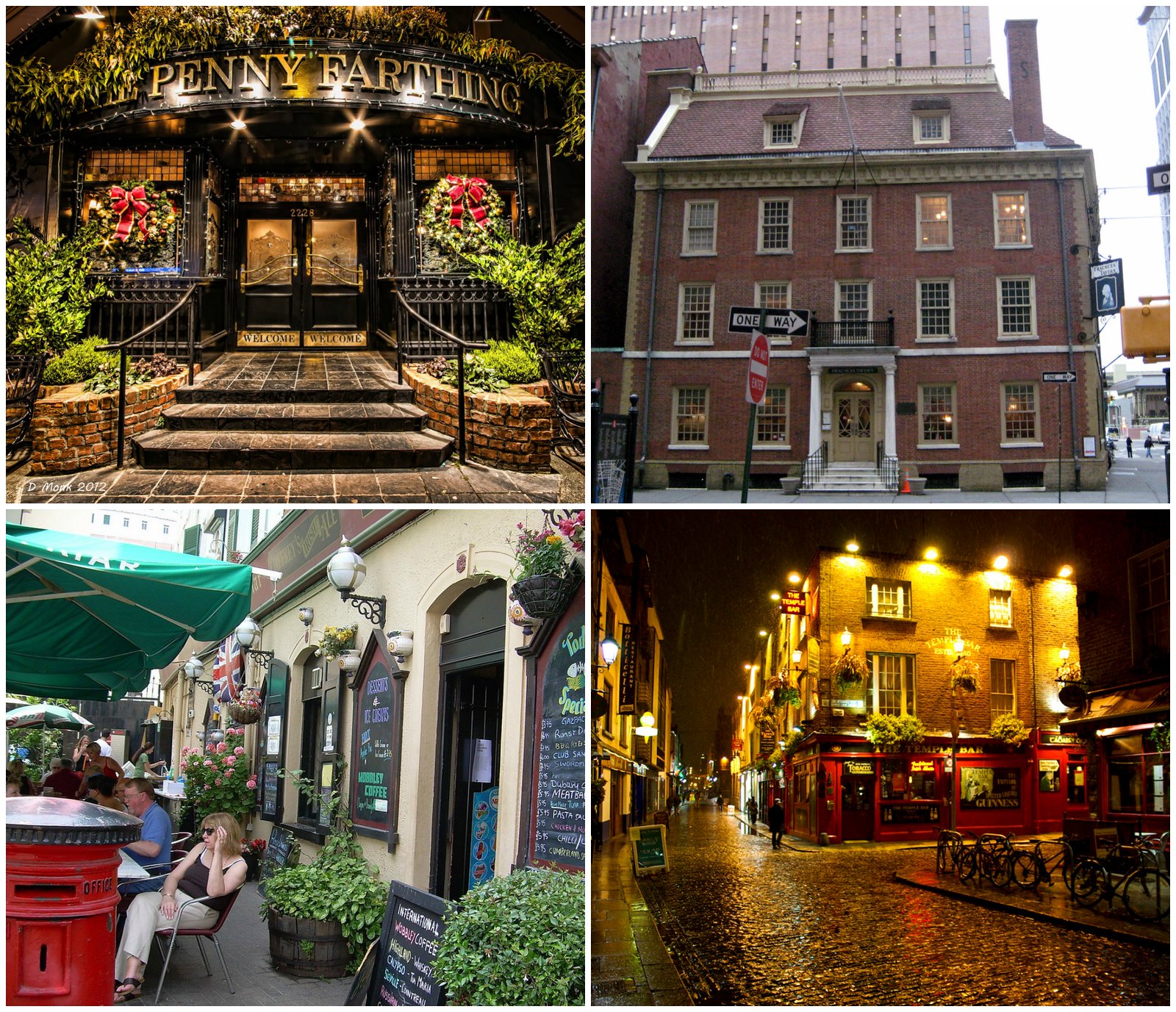
The Pub Network used to be the focal point for the village community. But times change. Nowadays, there are several competing “online” social networks.
Thanks to advances in technology, the Pub Network is now fully compatible with all other social networks. So as you chat away over a pint, a gin and tonic, or even a lemonade, you can rest assured of having full connectivity to your other favorite networks—all within the Pub Network. Amazing, huh?
Let’s look at an example. This happy group of “Pub Patrons”, as members are called, is checking an online social network whilst talking over a drink in the Pub Network. The evidence of having a good time is several empty Guinness glasses, and the Pub Patron’s “pub talk”:
“Your round, isn’t it, Colin? Mine’s another Guinness. Cheers!”

When you first connect to the Pub Network, you’ll be presented with a comprehensive array of options with odd-sounding names like “Speckled Hen”, “Old Peculiar”, “Bombardier”, “Bishop’s Finger”, and “Old Hooky”.

Don’t let this techno-talk intimidate you. Choosing your options is a very simple, intuitive process, with no training required.
But if you do need help, fear not—an organization called CAMRA (Campaign for Real Ale) has worked with leading online networks to offer advice and useful tips. They can help you locate “Pubs” (these are nodes on the Pub Network) that carry special authentic beers, called “Real Ales”.
In addition to real ales, there are dozens of other options to choose from. Setting up your preferences can be time-consuming, but in surveys, 99.99% of people said they thoroughly enjoyed the experience.
The history of the Pub Network
This is Ye Olde Fighting Cocks, listed in the Guinness Book of Records as Britain’s oldest pub, but one of several making the same claim. First licensed in 1756 and trading as the “Three Pigeons”, its octagonal appearance is due to its original use as a pigeon house.
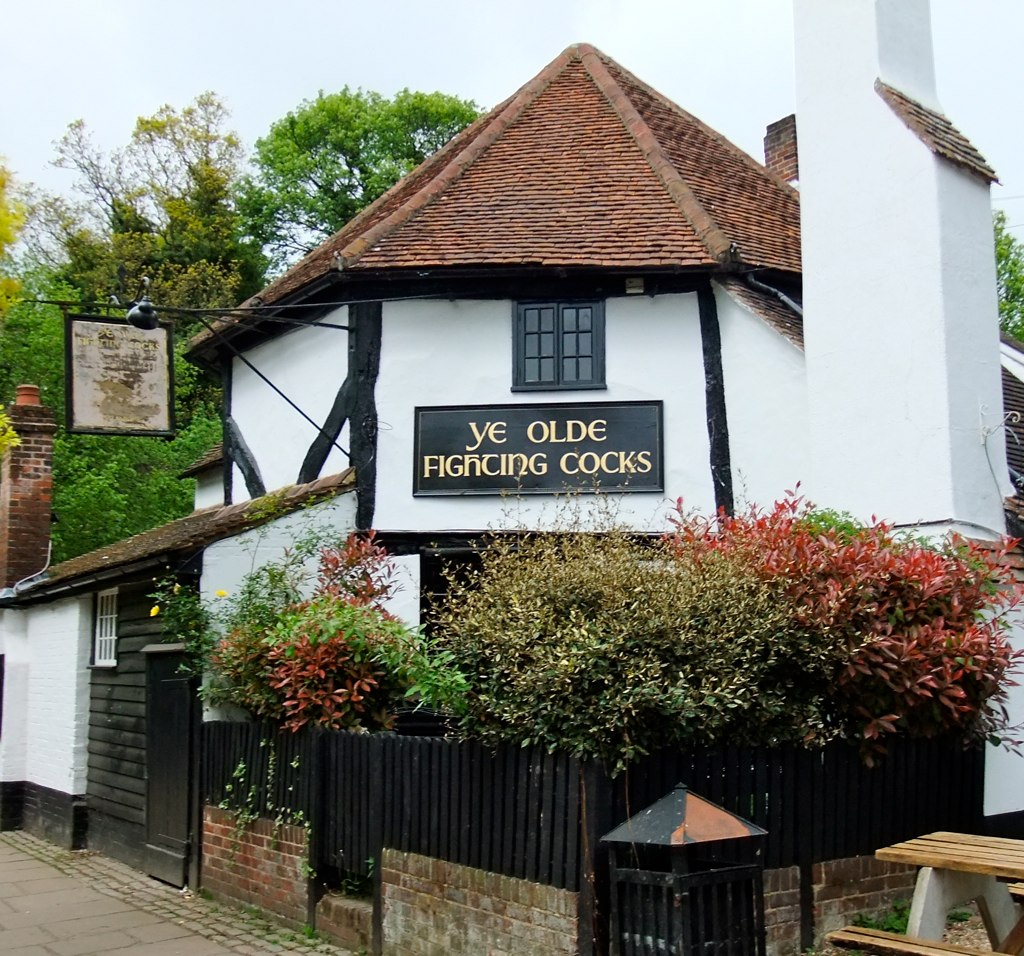
Text contains affiliate links.
If you enjoyed the 2010 movie “The Social Network“, starring Jesse Eisenberg as Mark Zuckerberg, you’ll really enjoy the story of the Pub Network.
In the 17th century, gin was a very popular spirit served in taverns across the Netherlands.
People would have so much fun talking and drinking, that they would fall about laughing.

Meanwhile, in 1689, a very strange thing happened. The head of the Netherlands—William III—became King of England, Ireland, and Scotland in a hostile takeover bid (well, there was a bit of insider trading, but that’s not important right now).
This gave him complete control of Britain’s alehouse network (the forerunner of the Pub Network).
As Chairman of the Board of the British Government, King William set about recreating the jolly environment of the Netherlands taverns.
He cornered the market in cheap grain that was unfit for brewing ale and instigated the opening of thousands of “Gin Shops” all over London.
Little did William know that his legislation had started a conspicuous consumption trend that became known as the “Gin Craze.”
Just as the Dutch taverns were filled with people bent double in rapturous laughter, it wasn’t too long before Brits were doing the same.
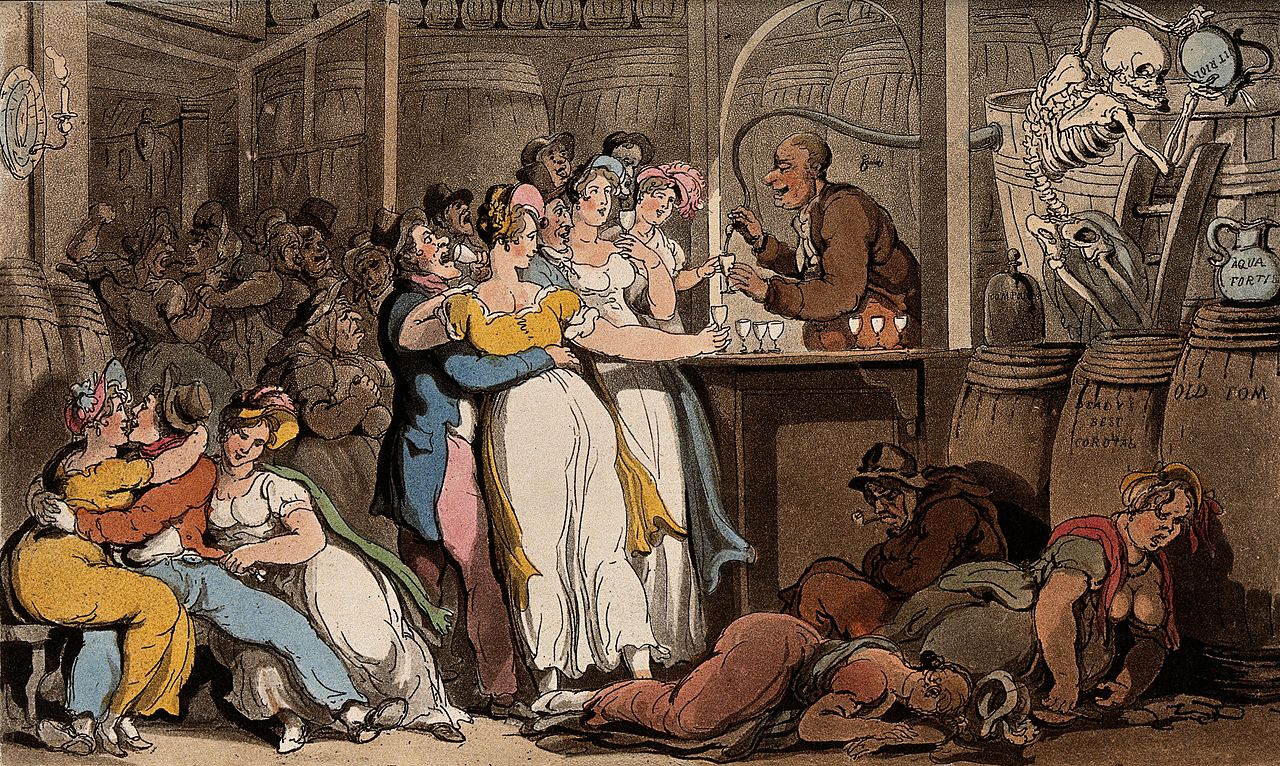
The city of London had an epidemic of “extreme drunkenness” on its hands.
It provoked a moral outrage among the upscale French brandy-drinkers, with a legislative backlash that some compare to the modern war on drugs.
Brits were labeled a “drunken ungovernable set of people” by the Bishop of Sodor and Man.
And prominent English novelist and dramatist Henry Fielding blamed gin speculation for both increased crime and increased ill health among children.

It was William Hogarth’s famous engravings “Gin Lane” and “Beer Street” that paved the way for a new era of beer drinking in the history of the Pub Network.
Hogarth contrasted the miserable lives of gin drinkers (left) with the healthy and enjoyable lives of beer drinkers (right).

In an effort to reduce public drunkenness, Parliament passed the Beerhouse Act of 1830 to liberalize laws governing the brewing and sale of beer.
Under the act, for a modest one-off license fee, any householder could brew and sell beer from their own premises—most often the front parlour.
Hundreds of new beerhouses opened in the first year alone, particularly in the industrial north of England.
By 1838, there were 46,000 beerhouses with some owners making so much money, they bought the house next door and turned every room of the beerhouse into bars and lounges.
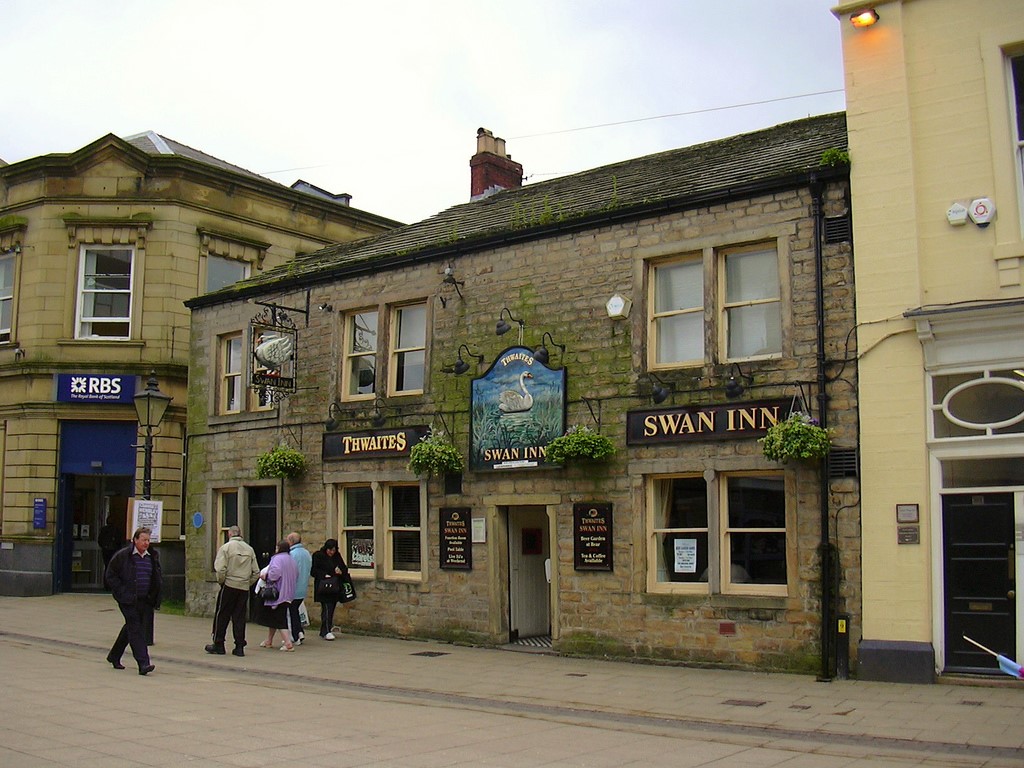
By 1869, the beerhouse network had grown out of control and new laws led to several years of network consolidation.
Most beerhouses applied for new licenses to become full pubs on the Pub Network.
Pubs went through several evolutionary iterations to become today’s social gathering places.
- Saloons were rooms inside of pubs where additional entertainment was offered for a small fee or higher prices of drinks. Singing, dancing, drama, or comedy could be enjoyed whilst drinks were served at tables with plush seating.
- Public bars were a “lite” version of the saloon for a budget price. Also called the “tap room”, they had a rustic appearance, with hard benches, and sawdust on the floor to absorb spilled drinks and spitting (aka “spit and sawdust”).
- Snugs were another innovation, sometimes called the “smoke room”. They were small and private, with frosted glass so passersby couldn’t see in. These were the “high-end version” of the early pub network, frequented by the well-heeled. Discretion was the operative word for secret lovers to rendezvous, or the local clergy to indulge in a late night whisky.
- The Bar Counter was a step-change in productivity and convenience, offering a new way to serve the largest number of people in the shortest possible time. Ordering at the bar is the preferred way for customers to order drinks today.
“Propping up the bar” became a term for spending a lot of time drinking at the bar. It was used to great effect in the 1980’s BBC comedy sitcom “Only Fools and Horses“.
Today, pubs can be found all over Britain, from cute country pubs in the Cotswolds to grand Victorian pubs in London.
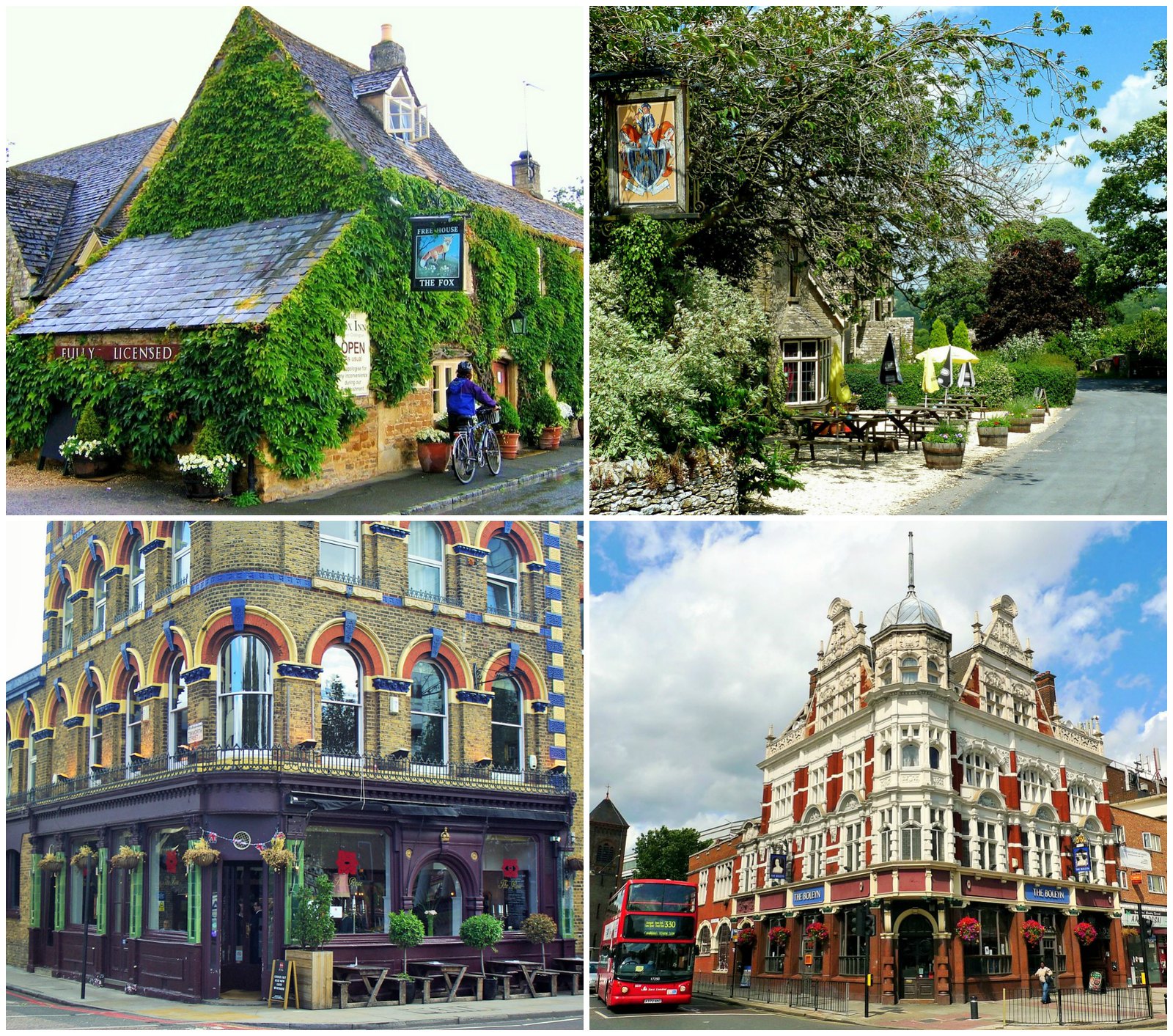
References and credits
Wikipedia.org
CAMRA
Cover image: Anguskirk
